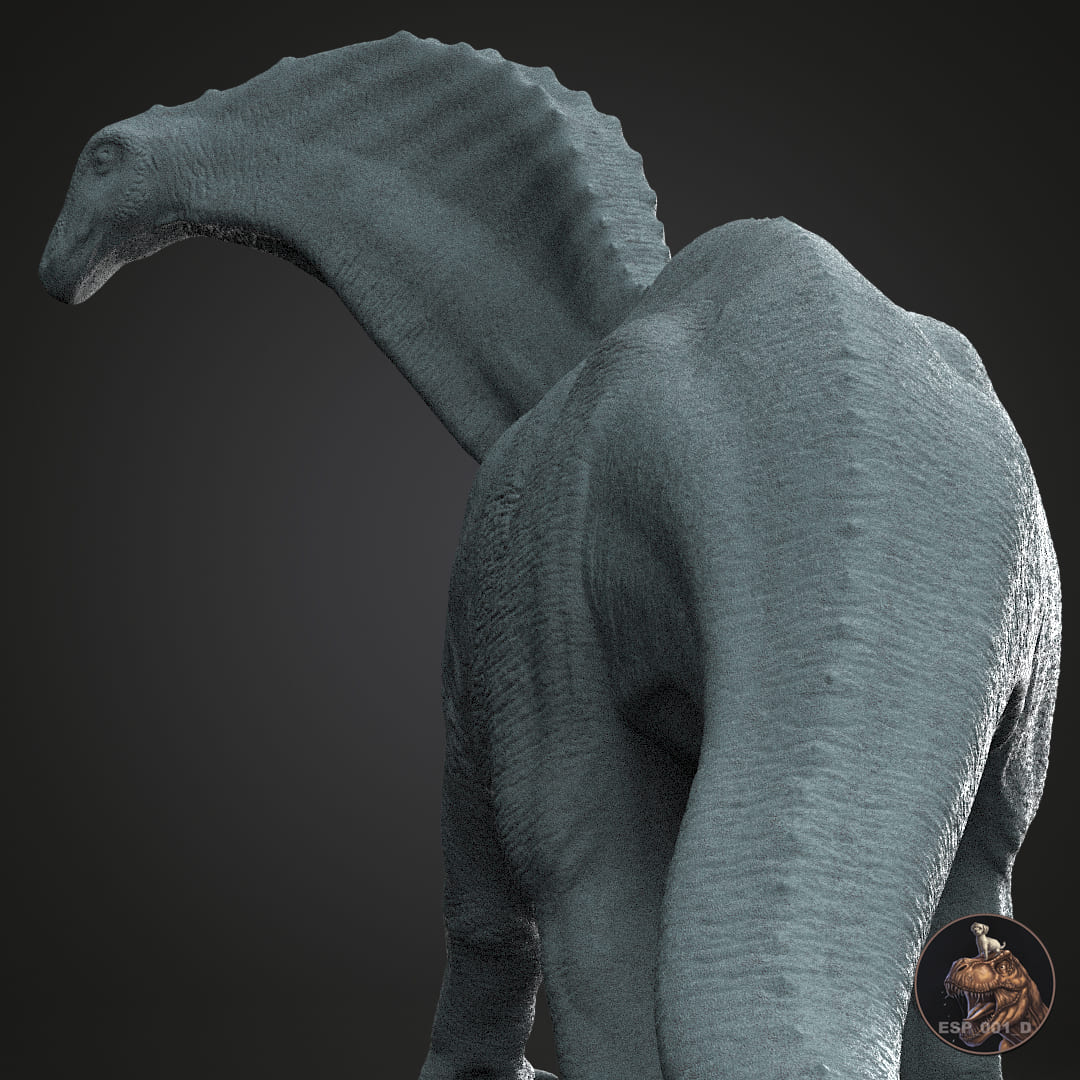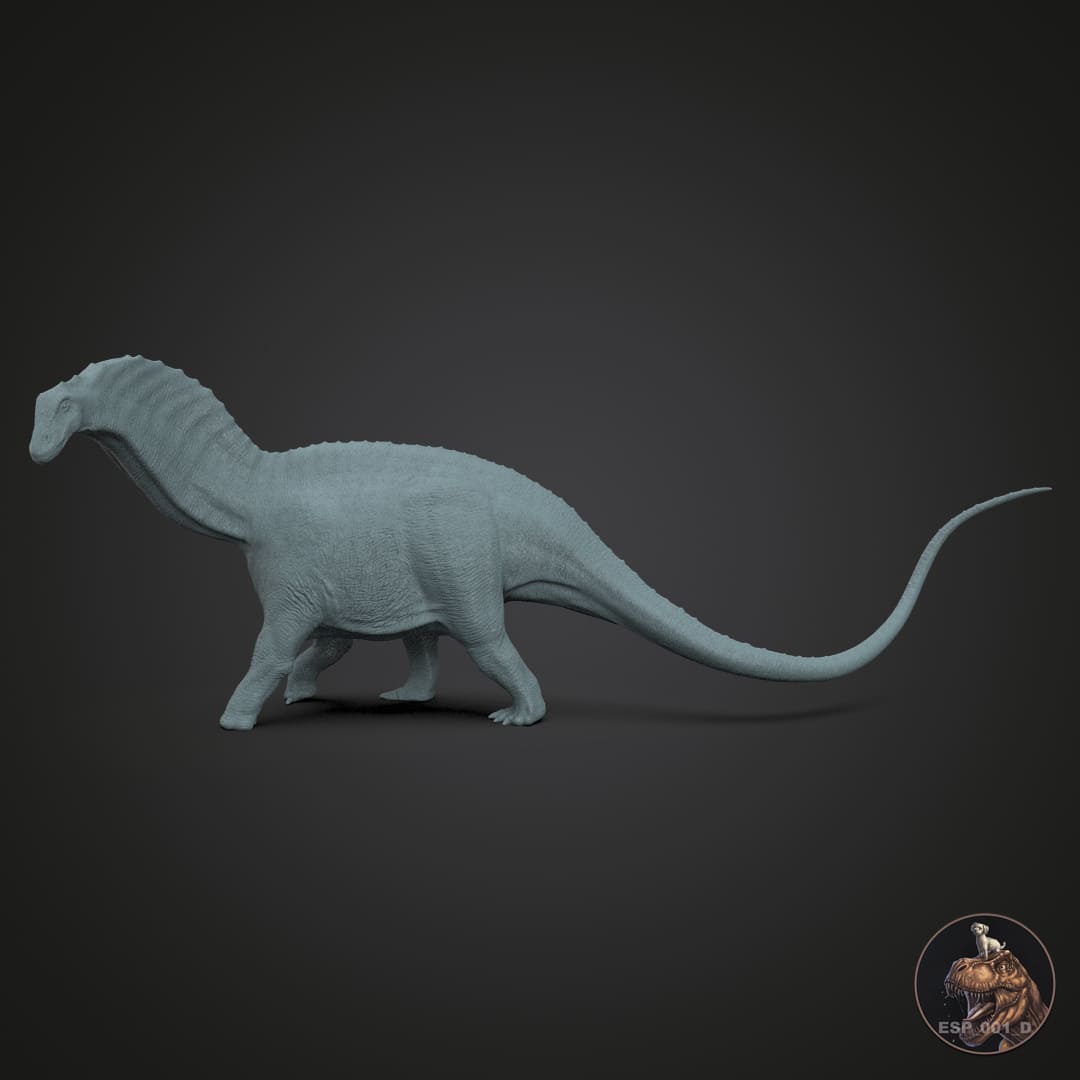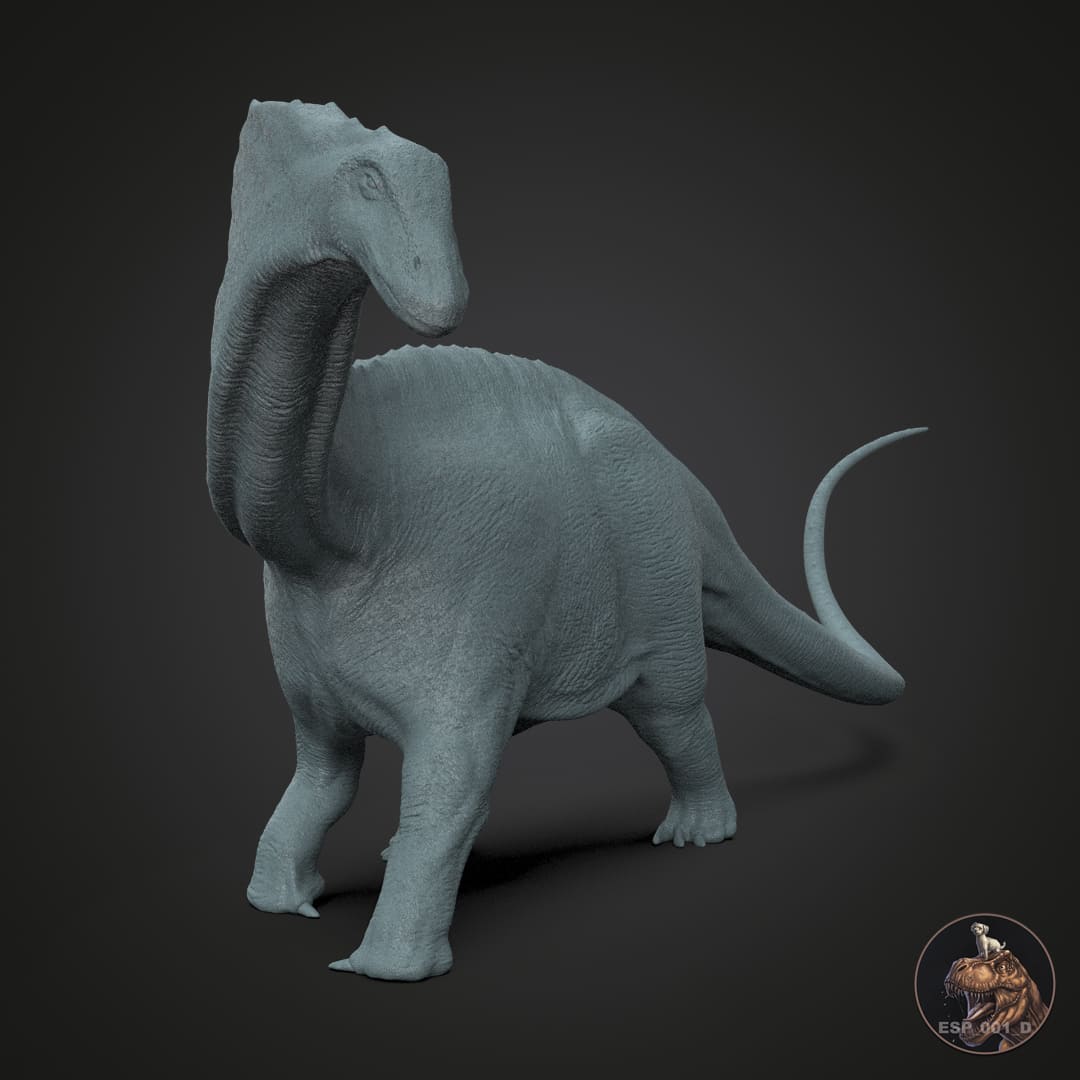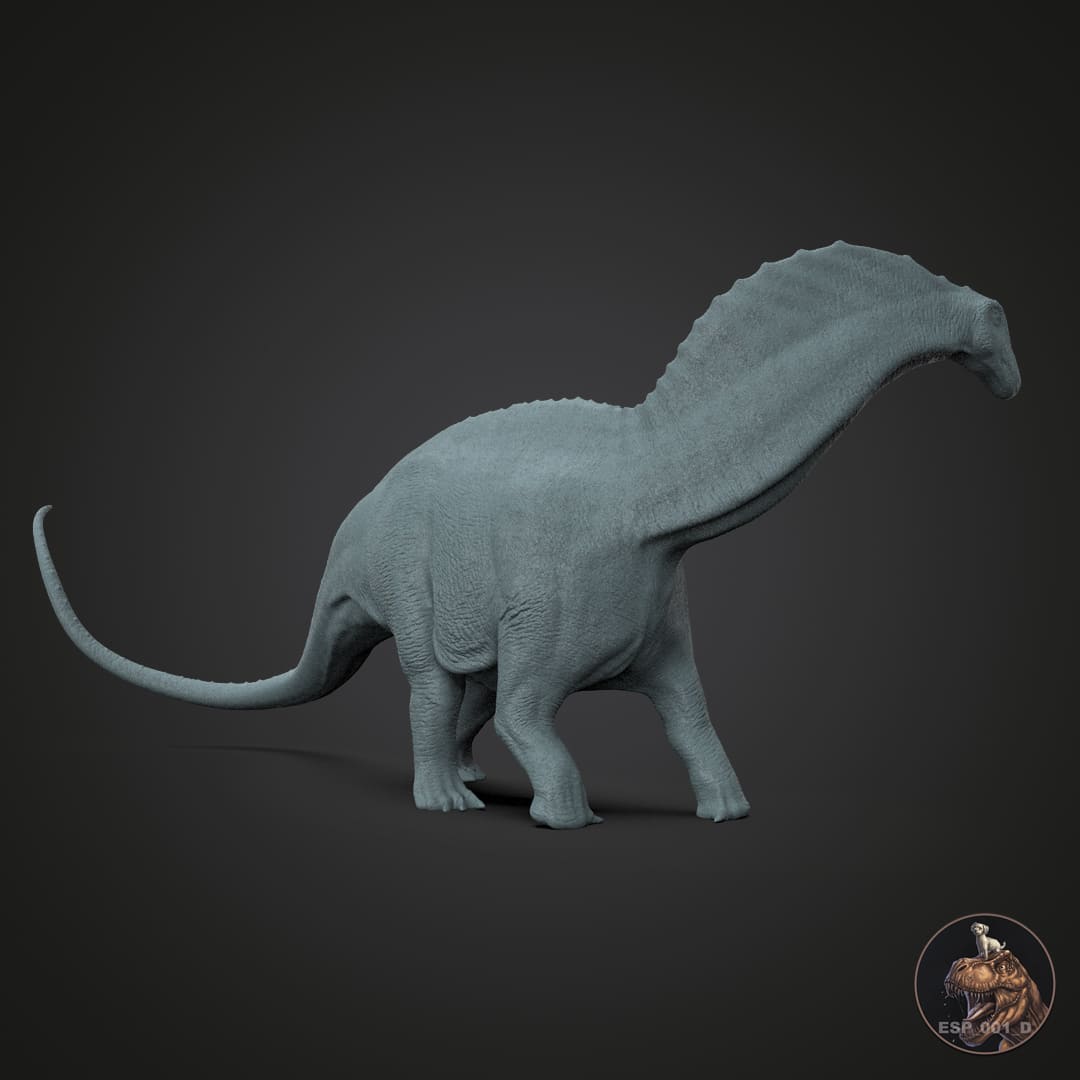



Amargasaurus cazaui
Do you want another scale?
Contact us and we will make it possible!
How will you receive your replica?
In the unprimed and primed variants, you will receive the complete replicas except for the large models, where you will receive an assembly kit.
In the hand-painted variant, the replicas will be delivered complete.
How does the painting service work?
We created a private chat for you where you will have direct communication with our painter , being able to choose your preferred color schemes and follow the hand painting process closely.
Pairs well with

Amargasaurus cazaui
If you have any questions, you are always welcome to contact us. We'll get back to you as soon as possible, within 24 hours on weekdays.
Shipping Information
Visit our shipping policy page to find all the information.
Customer Support
Give us a few details and we’ll offer the best solution. Connect by chat or email.
We are available 24/7.
FAQ’s
Visit our FAQ's page to find answers to common questions.
Contact Us
We'd love to hear from you. We are here to help. Visit our contact page to send us a message.
Product details
One of the most striking features of Amargasaurus cazaui is its double row of tall neural spines that extend along its neck and part of its back, possibly forming a unique structure in sauropods. These spines, which protruded from the cervical and dorsal vertebrae, may have reached up to 60 centimeters in length and had a forked shape, giving them an appearance similar to two rows of "sails" or "horns" running parallel on the top of the animal. Studies suggest several possible functions for these spines, although their exact purpose remains a matter of debate. Some theories propose that these spines were covered by a layer of skin, forming a sail that could have aided in thermal regulation. Other hypotheses suggest that these spines may have served as display structures for visual communication, recognition between individuals, or even to intimidate potential predators or competitors.
Amargasaurus was a relatively small dinosaur compared to other sauropods, measuring around 9 to 10 meters in length and weighing approximately 3 tons. Its compact size suggests an adaptation to its environment, possibly a landscape of open forests and semi-desert areas of low vegetation. Unlike the larger sauropods that inhabited the same region and fed on treetops, Amargasaurus is thought to have taken advantage of its smaller size and relative agility to feed on lower plants, such as ferns, cycads and other mid-growth plants, thanks to a flexible but not excessively long neck. Its skull was small and light, equipped with spoon-shaped teeth, suitable for tearing off soft vegetation.
As for its locomotion, Amargasaurus had a robust body, with forelimbs somewhat shorter than the hindlimbs, giving it a slightly forward-leaning posture. This would have allowed it to move efficiently in search of food. The structure of its legs and pelvis indicate that it was well adapted to move on varied terrain, possibly taking advantage of areas where other larger sauropods could not easily access. The tail of Amargasaurus was relatively long and muscular, probably used to maintain balance while walking and for quick maneuvers if necessary.
Recent research on the bones and skeleton of Amargasaurus cazaui has provided new insights into its growth and development. Bone histology analyses suggest that this dinosaur experienced rapid growth during the early stages of its life, slowing down as it reached maturity. This type of growth was typical of medium-sized dinosaurs, which needed to quickly reach a sufficiently large size to reduce the risk of predation.
The discovery of Amargasaurus cazaui has been fundamental in the study of dicraeosaurids and has expanded knowledge about the diversity of sauropods in the Early Cretaceous of South America. This dinosaur stands out not only for its unique appearance, but also for the specific adaptations it presents for its environment. Overall, Amargasaurus represents a fascinating example of the evolutionary specialization of sauropods in distinct ecological niches, and its anatomy continues to be the subject of study to better understand life in ancient ecosystems in Patagonia.
For other scales, please do not hesitate to contact us at info@dinosauriacreatures.com
Approximate measurements of Amargasaurus:
- 1:57 Scale Complete
- Length 145 mm
- Height 53 mm
- Width 46 mm
- Snout-tail length 183 mm
- 1:35 Scale Assembly Kit
- Length 235 mm
- Height 86 mm
- Width 75 mm
- Snout-tail length 300 mm
Information about aftershocks
Collector's item ; Hyper-realistic replica, highly detailed and with a high degree of scientific precision.
Made to scale, prototyped in resin and with a scenic base in most of the models offered. If you like miniatures, both for collecting and for painting, we offer you a wide variety of scale replicas; All of them related to dinosaurs, extinct prehistoric fauna and current fauna.
So if you love dinosaurs and animals as much as we do, this is your favorite store to collect and paint them :)
We are authorized distributors of all the replicas and figures we offer. We use 3D printers with 8K - 14K resolution, and high-quality resins with additives to improve hardness and flexibility, thus offering replicas of impeccable quality.
Different scales will be used to make the replicas (depending on the size of the species), although we are open to making other suggested scales upon request as long as they fit in our printing trays, for which you will have to contact us via email and request the required size.
Replicas are supplied with the option of airbrush priming in dark grey. If you require another colour, please let us know which one you prefer in the box with special instructions for the seller. Without priming, we do not guarantee that the resin will accept paint.
We also offer the option of choosing a professionally painted replica, which is agreed upon throughout its development with the painter, through a private chat available.
Complete replica (one piece): We supply complete replicas in those models that are small, and models that are medium, large or not very bulky, will have the prerogative of being presented as a complete replica or assembly kit as the case may be.
Complete replicas will be supplied separately from their base.
Replica assembly kit: We supply replicas whose models are large, very large or bulky, only with this option.
The indicated replicas (generally composed of base, head, body and tail) will come prepared for the subsequent assembly that will be required by the client, by sanding, putty, adhesive or technique chosen by the client.
All replicas are thoroughly inspected before shipping and will be carefully packaged to prevent damage during transport.
Information about the models
The poses of the models aim to represent each character in the most scientifically viable way, thus revealing the life and customs of prehistoric and modern fauna.
Each character has its own personality and develops in different life scenarios; birth, adolescence and play, hunting, feeding, fighting, courtship, death and many other scenes from their daily life, always from the creative perspective of their designers.
Handmade
All orders are individually prepared on the cutter for subsequent prototyping, obtaining a resin part that will require post-processing by manual and ultrasonic cleaning, support removal, ultraviolet curing, labeling and packaging.

We are authorized distributors
We offer both our own physical replicas and those that have been modeled by many of the best 3D designers, in order to offer you the greatest possible variety.
Frequently Asked Questions
If you have any questions about products, orders or shipping, please read our FAQ page to learn more.

